What is CNC Machining? A Beginner’s Guide
In modern manufacturing, machines do much more than just drill holes or cut materials they do it with high precision, speed, and almost no human error. This is possible because of CNC machining, one of the most important technologies used in industries today. CNC machining is everywhere, whether it’s making car parts, aeroplane engines, mobile phone shells, or even metal jewellery.
However, many people don’t know what it means. How does it work? And why is it so important? In this guide, we’ll break it all down for beginners in the easiest way possible.
Understanding CNC Machining in Simple Terms
CNC stands for Computer Numerical Control. In simple words, CNC machining is a process where machines are controlled by computers to perform tasks like cutting, drilling, shaping, or grinding materials, usually metal or plastic, with incredible accuracy.
Before CNC, machines were operated manually by skilled workers. These manual machines required someone to turn wheels, push levers, and guide tools by hand. But in CNC machining, computers send signals to the machines and tell them exactly what to do, how to do it, and when to do it. This removes most human errors and allows for the production of complex parts that are almost impossible to make by hand.
So, CNC machining is not one single machine. It’s a system of machines (like mills, lathes, routers, or grinders) that are connected to a computer. The computer has a program that controls all the movements and operations.
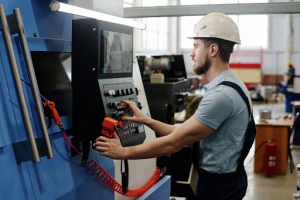
Why CNC Machining is Important
CNC machining has changed the way we make things. In earlier times, manufacturing was slower, more expensive, and less accurate. But today, with CNC machines, companies can produce high-quality parts very quickly and with great consistency. CNC technology is important for almost every modern product you see from the smallest electronic component to massive aircraft engines.
It helps save time, reduce labour costs, and produce goods on a large scale. It also allows for innovation. Designers can create complex shapes on a computer and trust that CNC machines can make them exactly as planned. This is especially useful in industries like aerospace, automotive, electronics, medical equipment, and industrial machinery.
At Kirmell, we understand how critical precision and speed are in today’s manufacturing world. That’s why we offer a complete range of CNC machining services, including milling, turning, and multi-axis work, tailored to meet the needs of all types of heavy industries. Whether you need a one-off prototype or a full production run, we’re equipped to deliver accurate and reliable results. Contact us now for information and let us know your requirements.
How CNC Machining Works
CNC machining is a process that combines computer programming, machine tools, and material cutting to create a finished part. Here’s how the process works, broken down into clear and easy-to-follow steps:
Creating a Digital Design (CAD)
The process begins with a digital drawing or design of the product. Engineers use software called CAD (Computer-Aided Design) to do this. This design includes all measurements, shapes, holes, and features that the part needs to have.
Converting the Design into Machine Language (CAM)
Once the CAD model is ready, it is converted into a format that CNC machines can understand. This is done using CAM (Computer-Aided Manufacturing) software. CAM translates the design into G-code, a set of instructions the CNC machine will follow. It tells the machine where to move, how fast to move, how deep to cut, and what tools to use.
Setting Up the CNC Machine
Next, the material to be cut (called the “workpiece”) is placed on the machine. This could be a block of metal, plastic, or even wood. The machine operator also sets up the right cutting tools (like drills or milling cutters) based on the job requirements. Everything must be aligned correctly for the machine to work perfectly.
Machining the Part
Once everything is set, the machine follows the G-code instructions and starts cutting the material. It moves in multiple directions (X, Y, and Z axes) to cut, shape, or drill the part precisely. Depending on the machine type, the workpiece might spin (like in a lathe), or the tool itself might move (like in a milling machine).
The machine may also perform several operations simultaneously, cutting edges, drilling holes, making threads, or smoothing surfaces, making the process very fast, efficient, and accurate.
Finishing and Inspection
After machining, the part may go through a few finishing steps like polishing or coating, depending on its use. Quality control is also important. Tools like callipers and coordinate measuring machines (CMMS) check if the final part meets all the required dimensions.
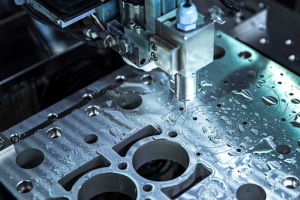
Types of CNC Machines
There are many types of CNC machines used for different tasks. Here are some of the most common ones explained simply:
CNC Milling Machine
This machine cuts material using a rotating tool. It moves along multiple axes and can create shapes, holes, and curves in a flat or 3d surface.
CNC Lathe Machine
In this machine, the material spins while a fixed cutting tool removes layers. It’s great for making round parts like rods, shafts, and screws.
CNC Router
Used for softer materials like wood, plastic, or foam. It’s common in furniture, sign-making, and model production.
CNC Plasma Cutter
Uses a jet of hot plasma to cut through metal. It’s fast and useful for thick sheets of steel or aluminium.
CNC EDM (Electrical Discharge Machine)
Cuts metal using electrical sparks. It’s used for very hard metals or for creating tiny, precise shapes.
Each of these machines is chosen based on the type of job, material, and design.
Benefits of CNC Machining
CNC machining is popular for many good reasons. Here are some of the most important benefits explained in simple terms:
High Accuracy and Precision
CNC machines can make parts that are extremely precise, sometimes down to 0.001 mm. Because the medical and aerospace industries require exact measurements, engineers use CNC machining to achieve a level of accuracy far beyond what humans can do by hand.
Speed and Efficiency
Once the design is programmed, CNC machines can produce parts very quickly. This means companies can fulfill large orders without delays. Even complicated parts can be made in just minutes.
Repeatability
Need to make 1000 identical parts? No problem. CNC machining can repeat the same task over and over with the same result. Every piece will be a perfect match.
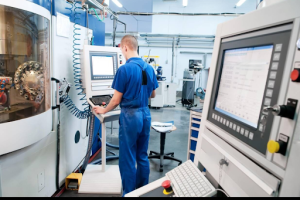
Less Waste
Since CNC machines follow exact instructions, there’s very little chance of making mistakes. This means less material is wasted, which saves money and is better for the environment.
Flexibility and Customisation
CNC machining is flexible. You can change the design on a computer and start making a new part without needing to build new tools. This makes it perfect for both mass production and custom one-time projects.
Reduced Labour Costs
One operator can manage multiple machines. And because most of the work is done by computers, fewer manual workers are needed, which lowers labour costs for companies.
Real-World Applications of CNC Machining
CNC machining plays a vital role in nearly every industry you can imagine. In the automotive sector, manufacturers use it to create engine parts, gearboxes, and brake components. Aerospace engineers rely on CNC machines to produce turbine blades, landing gear parts, and rocket components with extremely tight tolerances.
Electronics companies machine parts for smartphones, laptops, and circuit boards using CNC technology. In the medical field, surgeons depend on tools, implants, and prosthetics made with CNC precision. Even furniture makers, jewellers, and sports equipment brands use CNC machines to craft strong, eye-catching products.
In short, whenever a product demands strength, precision, and reliability, CNC machining usually plays a key role.
At Kirmell, we do more than understand these applications—we build them into everything we do. We supply tight-tolerance components for industrial machinery and support startups by machining custom parts for new product launches. Our CNC capabilities deliver precision, reliability, and efficiency across a wide range of industries. Check out our brochure to see how we can support your next project
The Future of CNC Machining
The future of CNC machining looks even more exciting. Machines are getting smarter with the help of Artificial Intelligence (AI) and machine learning. This means machines will be able to self-correct, reduce errors, and even predict maintenance needs.
3d printing and CNC machining are now being combined to create hybrid machines that add and remove material. This gives designers more freedom and makes the manufacturing process even more efficient.
More companies are also going green by using energy-efficient machines and recyclable materials. With smart factories, CNC machines will be connected to networks, sharing data and improving productivity automatically.
So, CNC machining is not just a tool; it’s becoming part of a larger smart manufacturing system that will power the factories of the future.
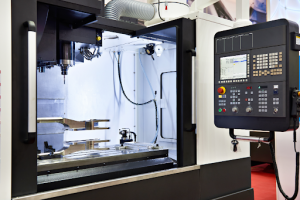
Conclusion
CNC machining is one of the most powerful and important tools in modern manufacturing. It allows us to make everything from aeroplane parts to toothbrush handles with amazing precision, speed, and efficiency. Understanding CNC machining gives students, hobbyists, and curious minds a window into the world of high-tech production.
At its core, CNC machining is about using computers to control machines. But in reality, it’s about unlocking creativity, solving real-world problems, and building a future where we can make anything we imagine with the push of a button.
Need Precision CNC Machining You Can Rely On? Choose Kirmell Ltd
At Kirmell Ltd, we specialise in delivering accurate, dependable CNC machining services tailored to your project needs—whether it’s a one-off prototype or high-volume production.
With a strong focus on quality, flexibility, and speed, we support UK and EU industries with:
- CNC Milling & Turning – Tight-tolerance parts produced with speed and consistency
- Laser Cutting – Clean, cost-effective solutions for sheet metal and custom profiles
- Custom Components – From brackets to fixtures, we machine to your exact specs
- Design & Tooling Support – Early-stage advice, prototyping, and full tooling setup
Backed by ISO 9001:2015 and EN1090 certifications, our team ensures quality results every time.
Let’s build something together. Contact us today to get started.
FAQs
What is CNC machining?
How does a CNC milling machine work?
What are the benefits of CNC machining?
What materials can be used in CNC machining?
What industries commonly use CNC machining?
How accurate is CNC machining?
How long does CNC machining take?

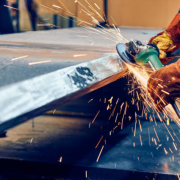
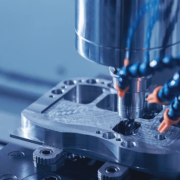
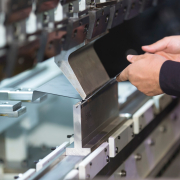
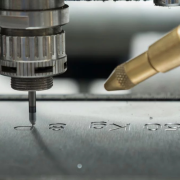
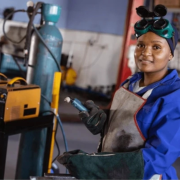
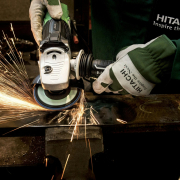

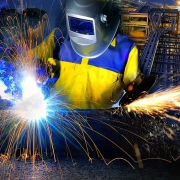



Leave a Reply
Want to join the discussion?Feel free to contribute!